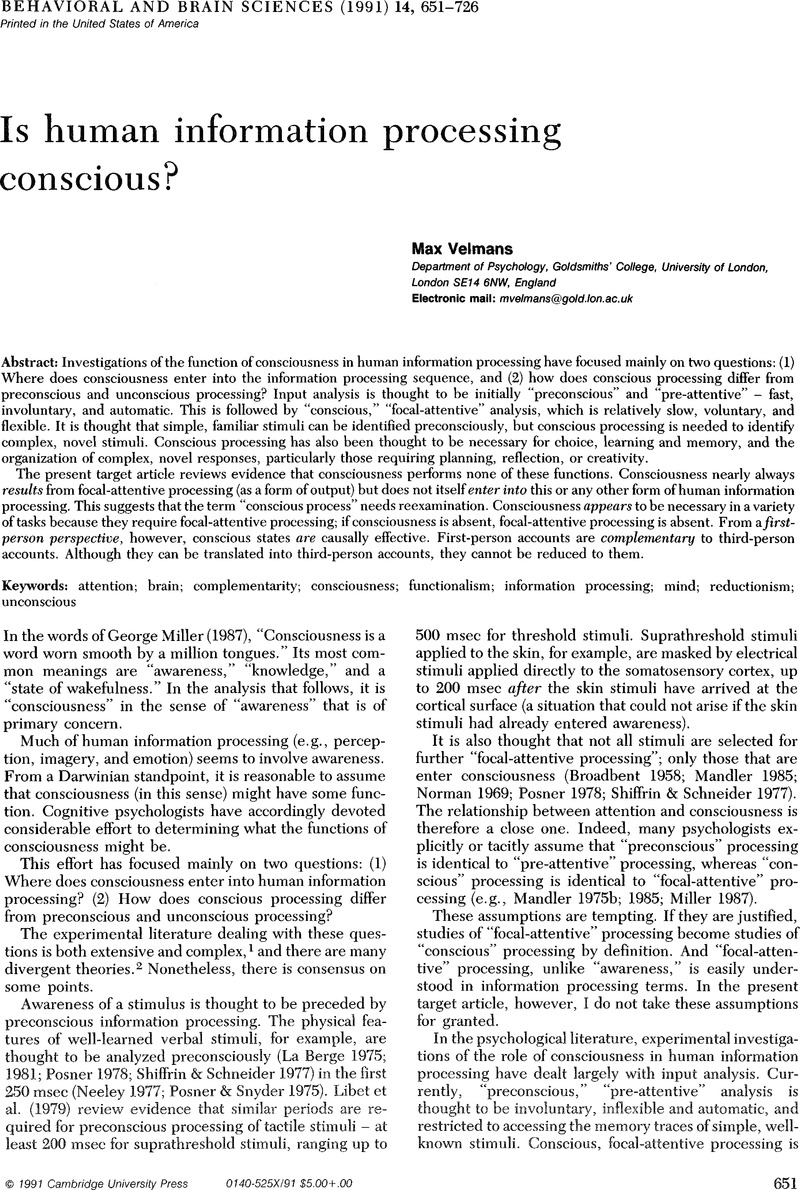Crossref Citations
This article has been cited by the following publications. This list is generated based on data provided by Crossref.
Dennett, Daniel C.
and
Kinsbourne, Marcel
1992.
Escape from the Cartesian Theater.
Behavioral and Brain Sciences,
Vol. 15,
Issue. 2,
p.
234.
Block, Ned
1992.
Begging the question against phenomenal consciousness.
Behavioral and Brain Sciences,
Vol. 15,
Issue. 2,
p.
205.
Gregson, Robert A. M.
1992.
Nothing is instantaneous, even in sensation.
Behavioral and Brain Sciences,
Vol. 15,
Issue. 2,
p.
210.
Shepard, Roger N.
1992.
Mental representation: Always delayed but not always ephemeral.
Behavioral and Brain Sciences,
Vol. 15,
Issue. 2,
p.
223.
Rosenthal, David M.
1992.
Time and consciousness.
Behavioral and Brain Sciences,
Vol. 15,
Issue. 2,
p.
220.
Clark, Andy
1992.
Experiential facts?.
Behavioral and Brain Sciences,
Vol. 15,
Issue. 2,
p.
207.
Jeannerod, M.
1992.
The where in the brain determines the when in the mind.
Behavioral and Brain Sciences,
Vol. 15,
Issue. 2,
p.
212.
McDermott, Drew
1992.
Little “me”.
Behavioral and Brain Sciences,
Vol. 15,
Issue. 2,
p.
217.
Damasio, Antonio R.
1992.
The selfless consciousness.
Behavioral and Brain Sciences,
Vol. 15,
Issue. 2,
p.
208.
Wasserman, Gerald S.
1992.
The psychoanatomy of consciousness: Neural integration occurs in single cells.
Behavioral and Brain Sciences,
Vol. 15,
Issue. 2,
p.
232.
Van Gulick, Robert
1992.
Time for more alternatives.
Behavioral and Brain Sciences,
Vol. 15,
Issue. 2,
p.
228.
Reingold, Eyal M.
1992.
Conscious versus unconscious processes: Are they qualitatively different?.
Behavioral and Brain Sciences,
Vol. 15,
Issue. 2,
p.
218.
Antony, Michael V.
1992.
The where and when of what?.
Behavioral and Brain Sciences,
Vol. 15,
Issue. 2,
p.
201.
Lycan, William G.
1992.
UnCartesian materialism and Lockean introspection.
Behavioral and Brain Sciences,
Vol. 15,
Issue. 2,
p.
216.
Baars, Bernard J.
and
Fehling, Michael
1992.
Consciousness is associated with centralas well asdistributed processes.
Behavioral and Brain Sciences,
Vol. 15,
Issue. 2,
p.
203.
Bridgeman, Bruce
1992.
What is consciousness for, anyway?.
Behavioral and Brain Sciences,
Vol. 15,
Issue. 2,
p.
206.
Velmans, Max
1992.
The world as‐perceived, the world as‐described by physics, and the thing‐itself: A reply to Rentoul and Wetherick.
Philosophical Psychology,
Vol. 5,
Issue. 2,
p.
167.
Teghtsoonian, Robert
1992.
In defense off the pineal gland.
Behavioral and Brain Sciences,
Vol. 15,
Issue. 2,
p.
224.
Dennett, Daniel C.
and
Kinsbourne, Marcel
1992.
Time and the observer: The where and when of consciousness in the brain.
Behavioral and Brain Sciences,
Vol. 15,
Issue. 2,
p.
183.
Young, Andy
1992.
Closing the Cartesian Theatre.
Behavioral and Brain Sciences,
Vol. 15,
Issue. 2,
p.
233.



